Tours, Places to Visit, and Things to Do in Tokyo
Tokyo Travel Guide
Tokyo (東京都), Japan’s dynamic capital, is a city where harmoniously coexist modernity and ancient Japanese traditions. Home to over 14 million and around 41 million in the Greater Tokyo Area as of 2024, it reigns as a hub of politics, finance, industry, and culture.
The city’s charm lies in its blend of historic temples, such as Senso-ji in Asakusa, and futuristic landmarks like Tokyo Skytree. A stroll through the lively district of Shibuya and Shinjuku, shopping in Ginza and Harajuku, or experiencing Tokyo’s vibrant arts and culinary scenes, will take sightseers on an exciting voyage. The Tokyo National Museum (東京国立博物館) exhibits the city's rich heritage, with over 85,000 artifacts, while serene parks like Shinjuku Gyoen provide tranquil escapes from the city’s energy.
With its abundance of places to visit and things to do, Tokyo is an unmissable destination for travellers seeking an unforgettable journey. Our comprehensive Tokyo Travel Guide provides all the essential information to plan your trip to Japan and make the most of your time in this extraordinary city.
Tokyo Tours

Tokyo tours cover incredible experiences that can make every moment in Japan an unforgettable visit – from staying at a ryokan (traditional Japanese inn) to taking painting lessons, joining a tea ceremony, exploring calligraphy classes, and trying a hand at Sumi-e ink art.
One may encounter Japanese culture with a bonsai lesson (Japanese art of growing miniature trees) or an ikebana workshop (Japanese art of flower arrangement), savour authentic flavours during a sake tasting, and learn about the rich heritage of katana (日本刀, Japanese one-sided sabre). For those with a sweet tooth, baking wagashi (和菓子, Japanese confectionery) is a delightful treat, while woodblock printing provides an artistic souvenir.
No trip to Japan is complete without a tour of Mt. Fuji (富士山) or a private tour of Tokyo, both of which can be arranged through Tokyo day packages. Private transfers from Tokyo International Airports, Haneda Airport (HND) (東京国際空港) or Narita International Airport (成田国際空港) (NRT), ensure a smooth start to what many consider the best Tokyo tours.
Wondering how many days are enough in Tokyo? With so many cultural, culinary, and artistic events to enjoy, planning at least seven days will let sightseers absorb the city’s charisma.
Best Time to Visit Tokyo
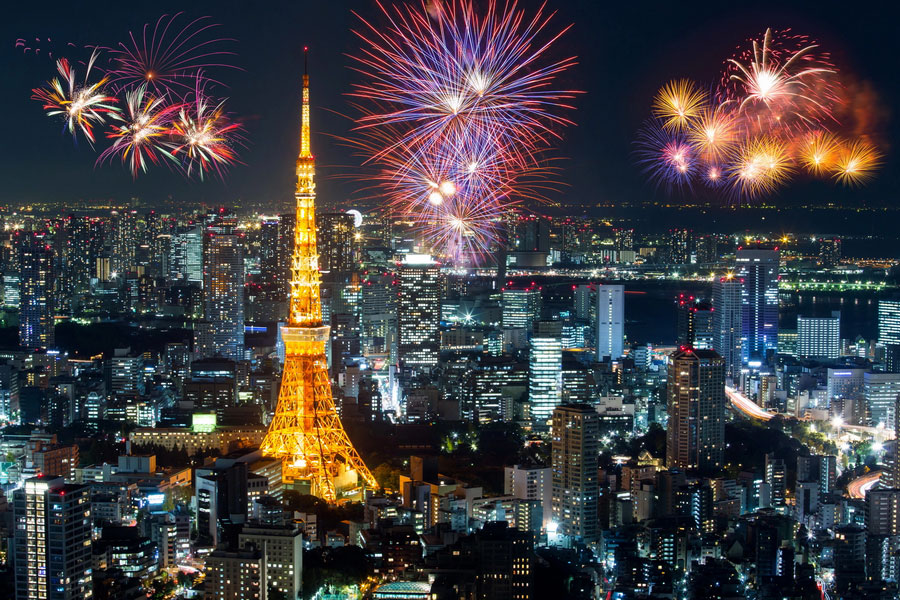
The best time to visit Tokyo is late March and mid-April. That’s when sakura (サクラ) cherry blossom starts blossoming, transforming the city into white and rosy shades. The weather temperature is pleasant enough for outdoor pastimes, like boating among blossoms.
Another great time for sightseeing in Tokyo is autumn. Temperatures are comfortably warm in October and November, and the city parks become carpeted with reddish leaves.
Many visitors recommend avoiding strolling through Tokyo in summer, since June is typically rainy, and July and August are unbearably hot and humid. On the other hand, Mt. Fuji is open for climbing only from June to September, and major summer festivals abound. Highlights include Hanabi Matsuri (Fireworks Festival) on the Shumida River (late July) and Obon Matsuri (Lantern Festival) in August.
Late December and early January are not as crowded as other seasons. Yet vacationers can still feel the Christmas spirit while wandering through Tokyo’s streets, where New Year lights twinkle overhead. Many public institutions and businesses will be closed from the 31st and will reopen on the 4th.
History of Tokyo
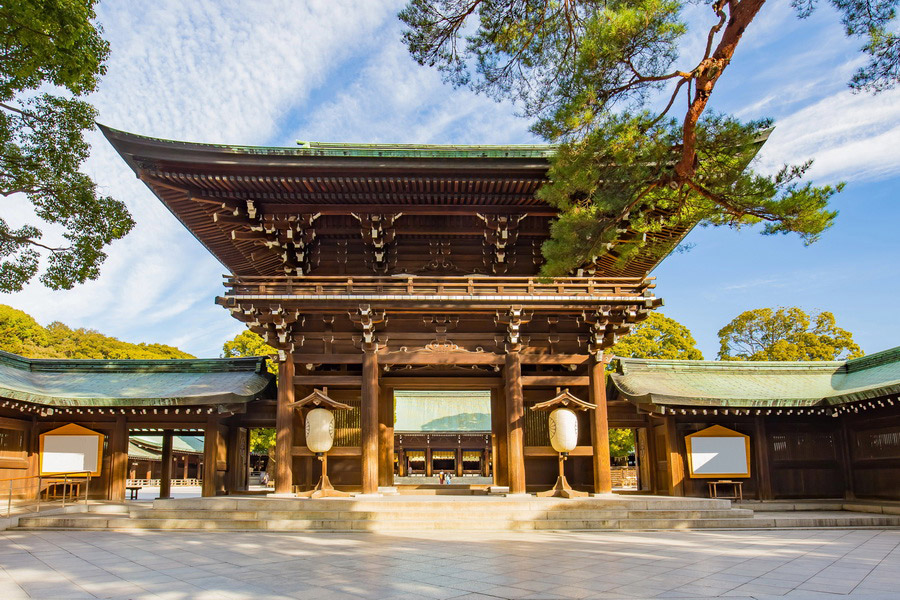
Tokyo, originally a fishing village known as Edo, traces its origins back to the construction of the Edo Fortification in the 15th century on Japan's Honshu coast. Then, under the leadership of Tokugawa Ieyasu, founder of the Tokugawa Shogunate, Edo ascended to the status of capital in 1590. But Kyoto was still the imperial capital. In 1615, Tokugawa Ieyasu won a big battle, and his family ruled Japan for the next 300 years. Edo saw rapid economic expansion during that time and became one of the biggest cities in the world by the 18th century.
The Meiji Restoration, which unfolded during the 19th century, led to the fall of the shogunate regime and the reinstatement of imperial power. In 1868, the emperor changed Edo's name to Tokyo, which means "eastern capital,” and it became a new capital. The late 19th century in Japanese history marks a tremendous growth in shipbuilding and industry and the development of a railway connecting Tokyo with Yokohama, Kobe, and Osaka.
On September 1, 1923, a catastrophic earthquake struck Tokyo and its surrounding areas, claiming the lives of approximately 90,000 individuals. The city's hardships continued during World War II when it endured devastating American aerial bombardments in February, March, and May 1945, leading to the deaths of more than 100,000 people after the bombardment of March 8, 1945.
In the second half of the 20th century, Japan went through an economic boom, emerging as the world's second-largest economy, behind the United States, in 1966. This remarkable revitalisation is renowned as the Japanese Economic Miracle. Remarkably, Tokyo served as the host city for the Summer Olympic Games in 1964.
Today, Tokyo is a principal financial hub on the global stage. The Tokyo Stock Exchange, comparable to the New York Stock Exchange (NYSE) and the London Stock Exchange (LSE), processes a large volume of financial transactions.
What to Do in Tokyo?
Places to Visit in Tokyo
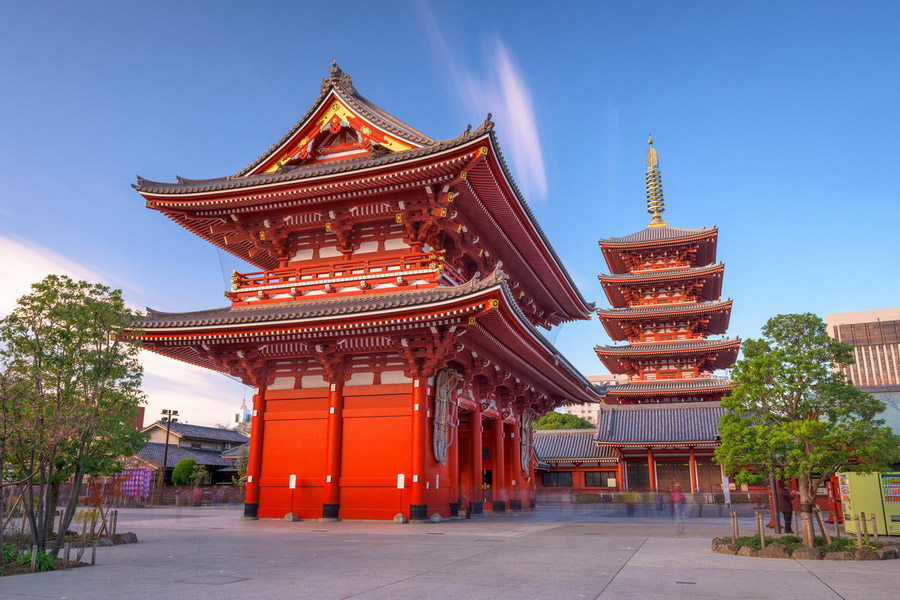
An incredible adventure awaits anyone in Tokyo. This never-sleeping city is packed with landmarks and places to visit in Tokyo that are pure wonder. Newcomers will find towering skyscrapers next to ancient temples and a fantastic food scene. Below are the top things to do in Tokyo, from temples and shrines to museums and observation decks.
Temples and Shrines
The Indigenous Shinto and Buddhism imported from China via India are two religions equally respected by the Japanese. During holidays and festivals, Tokyoites attend Shinto shrines and Buddhist temple ceremonies. For example, people exchange presents on Christmas, as it is celebrated as a commercial and secular festival, ring Buddhist temple bells on New Year’s Eve, and go to Shinto shrines on January 1. There are Buddhist-related festivals and the "mikoshi" celebrations based on Shinto beliefs.
Two must-see religious attractions in Tokyo are Senso-ji and Meiji Shrine. Located in the Asakusa district, the Senso-ji (浅草寺) temple is dedicated to the Goddess of Mercy. Its five-story pagoda dates to 645 AD and attracts millions of excursionists annually. The famed Meiji Shrine (明治神宮, Meiji Jingu) in Shibuya is a devotion to the former Emperor Meiji and his wife, Empress Shoken.
Museums
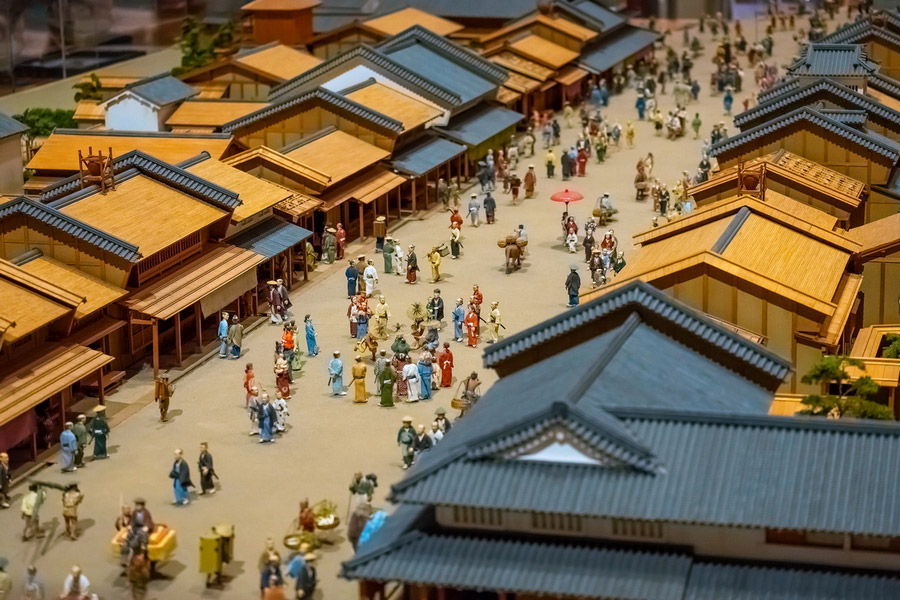
The abundance of the capital’s many museums may confuse a first-time traveller in Tokyo. One can find permanent collections and rotating exhibitions from local and international talent. If you are unsure where to go first, here are our picks for some of Tokyo’s museums:
The Tokyo National Museum (東京国立博物館), the Edo-Tokyo Museum (江戸東京博物), the National Art Centre (国立新美術館), the Ghibli Museum, the National Museum of Nature and Science (国立科学博物館), the Nezu Museum (根津美術館), the grounds of the East Garden of Tokyo Imperial Palace in Chiyoda hosts the Museum of the Imperial Collections Sannomaru-Shōzōkan (三の丸尚蔵館), and the teamLab Planets.
Art Galleries
While Tokyo’s eminent museums enthral connoisseurs with expansive collections, the city’s private galleries showcase a flourishing contemporary art scene – one where attendees can behold exquisite creations and procure distinctive keepsakes.
Kosaku Kanechika epitomises avant-garde sensibilities, featuring works by both Japanese and international artists, such as the lauded Yutaka Aoki and Junko Oki. Equally illustrious, the Whitestone Gallery curates a cosmopolitan roster, spotlighting pioneer talents like Miwa Komatsu and Karen Shiozawa. For collectors seeking revered names, the Tokyo Station Gallery and Kaikai Kiki Gallery proffer coveted pieces by Kainosho Tadaoto, Miyawaki Ayako, Aya Takano, or Emi Kuraya. These private venues exemplify Tokyo’s perpetual innovation in the arts and afford enthusiasts an exclusive opportunity to own a tangible fragment of the city’s ever-evolving tapestry.
Theatres
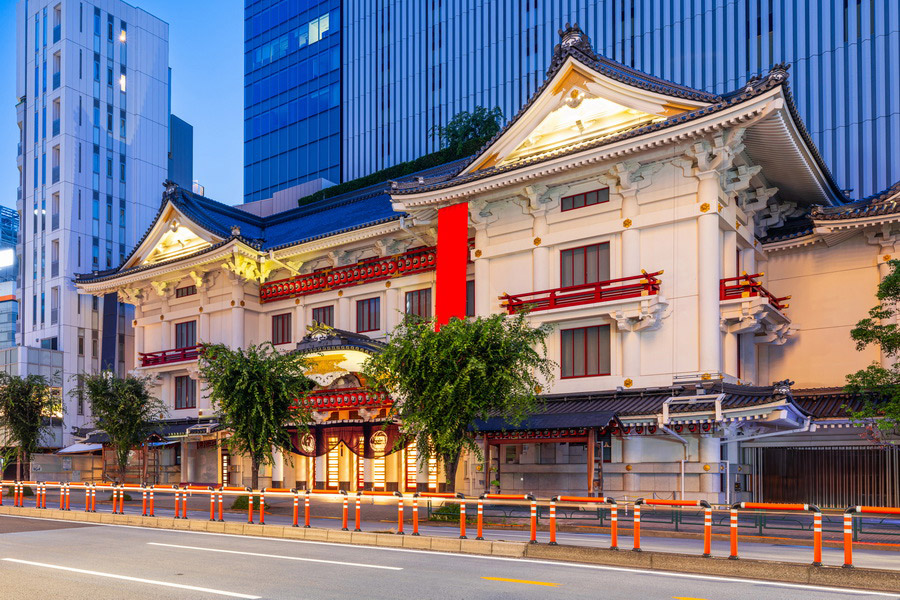
Music, opera, kabuki theatre, and comedy are within the broad range of performing genres visitors can watch live at the many theatres, stages, and concert halls of Tokyo, such as Kabuki-za (歌舞伎座), Meiji-za (明治座), Asakusa Engei Hall (浅草演芸ホール), and Nippon Budokan (日本武道館). Below, we present several of them.
- National Noh Theatre (国立能楽堂) is a venue with a large capacity to hold Japanese traditional performances, known as Kabuki and Kyogen in the Shibuya area, next to a train station.
- Tokyo Opera Concert Hall (東京オペラシティ コンサートホール), located in Shinjuku, hosts world-class ballets, operas, classical music concerts, and even modern dances.
- Tokyo Imperial Theatre (帝国劇場)is a modern theatre complex staging Western drama within spectacular exterior and interior design. During 2025, it will be closed for renovation.
Where to See Mt. Fuji from Tokyo?
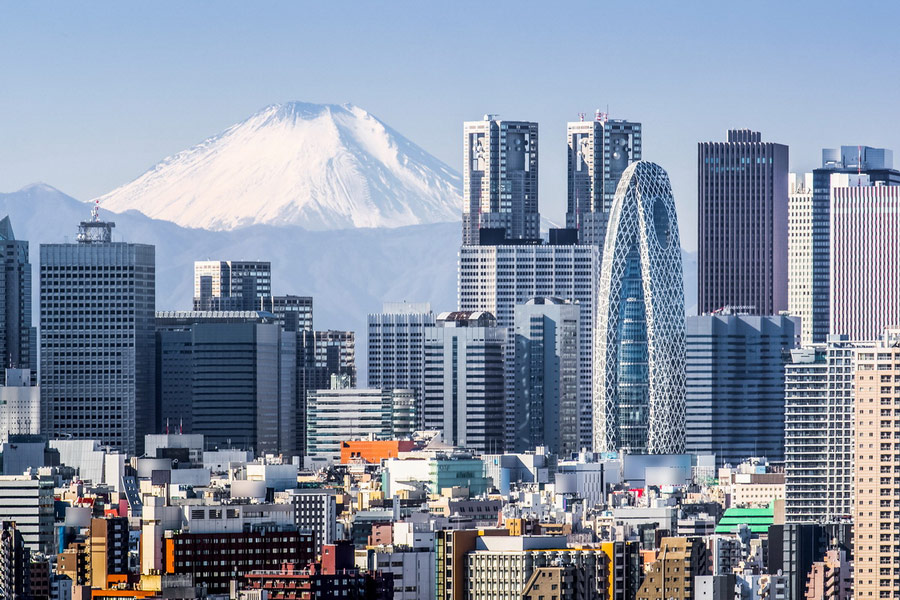
Certain spots in the city pride themselves on breathtaking views of this majestic mountain on clear days in winter. The optimal time for capturing Instagram-worthy photos falls between December and February. During these months, cooler temperatures minimise the likelihood of fog, allowing for clearer visibility. Moreover, the snow-covered Mt. Fuji resembles a beautiful bride adorned in a pristine white dress, creating a picturesque scene not to be missed. The only thing to remember is to check the opening hours before you go.
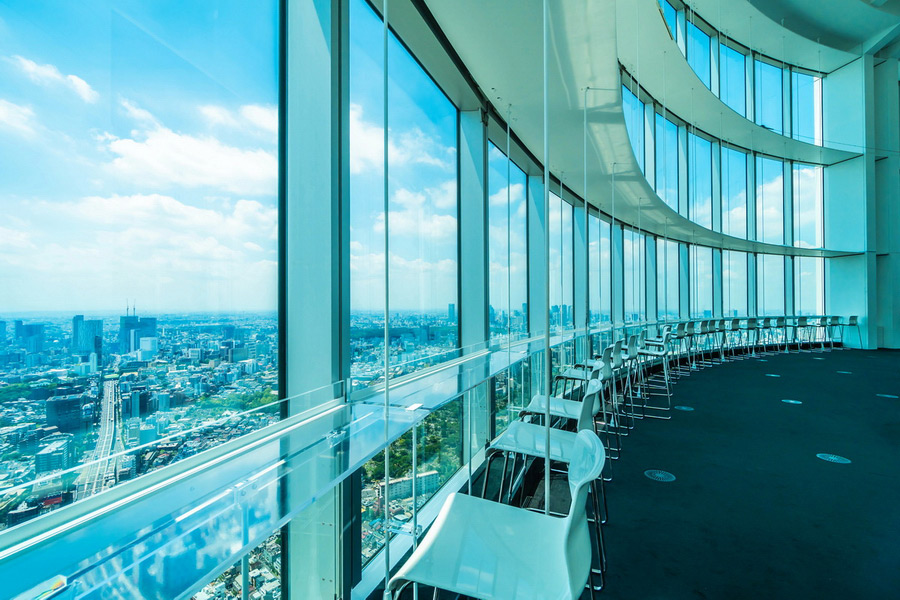
- On a sunny day in winter, the Tokyo Metropolitan Government Building (東京都庁舎), or Tocho, rewards you with the view you are looking for from the 45th floor.
- The Carrot Tower (キャロットタワー) in Sangenjaya is the only tall building in the area and, thus, a perfect place to relax and please your eyes with the Mt. Fuji view.
- Roppongi Hills (六本木ヒルズ) is a shopping complex with an indoor observation deck on the 52nd floor. In addition, it has an outdoor Sky Deck with a panoramic view of the city and Mt. Fuji.
- Other Observation Decks are Tokyo Tower (東京タワー), Tokyo Skytree (東京スカイツリ, the highest observation deck in Tokyo, Shibuya Sky, Bunkyo Civic Centre, and Sunshine 60.
- Private helicopter transfers take travellers to the mount in just 35 minutes.
Entertainment, Parks, and Shopping
For those seeking extraordinary moments in Tokyo, the city caters to rare entertaining excursions.
Entertainment
Imagine riding a state-of-the-art express train that melds traditional aesthetics with modern innovation. For a deeper cultural understanding, a private session of Noh theatre in the prestigious Ginza district is a must. Discover the beauty of imperfections through the art of kintsugi (金継ぎ), Japan’s traditional china and ceramic “golden repair” technique. An unusual encounter awaits anyone at a sumo school, where they can watch wrestlers train, learn about sumo traditions, and even share a meal with the athletes.
To get traditional Irezumi and Tebori tattoos, which are works of art on the skin, Choshu Horikazu is the finest artist in town, with more than 30 years of experience. His studio is located in Tokyo Minato Roppongi.
Anime and manga enthusiasts should wander the streets of Akihabara (秋葉原)and Takeshita Street in Harajuku (原宿).
Tokyo by Night
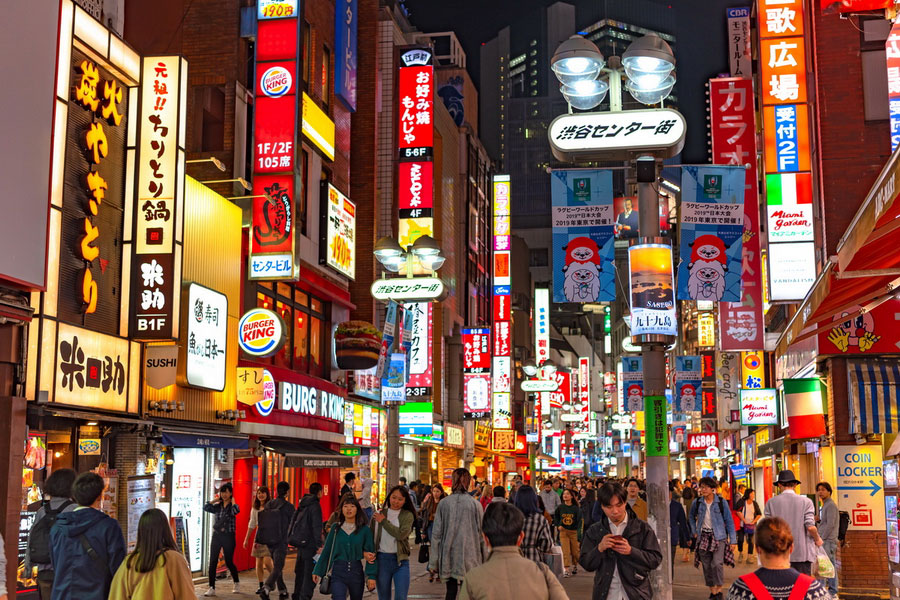
Tokyo transforms when the sun sets down, and its streets are lit with neon lights. From the brightly illuminated downtown of Shibuya (渋谷区) to the graceful skyscrapers of Ginza (銀座) and Marunouchi (丸の内) to bars, late-night art galleries, and lively izakayas (wine bars), anyone can take in Tokyo’s nightlife to the fullest.
- Head to the Shibuya, Shinjuku, and Roppongi districts for night bars and clubs.
- See illuminations during the Christmas and sakura seasons.
- Have a delicious dinner at one of the high-end rooftop bars or restaurants in Ginza.
- Laugh and enjoy great drinks at the Tokyo Comedy Bar.
- Feel the magic unfold on the stage of Tantra Tokyo (Tokyo Burlesque).
- Try sake for the first time at the Kurand Sake Market Ueno.
- Those who want to taste a cocktail from one of the world’s top bartenders, Yuzo Komai, should head to Bar Centifolia.
Tokyo Disney Resort (東京ディズニーリゾート)
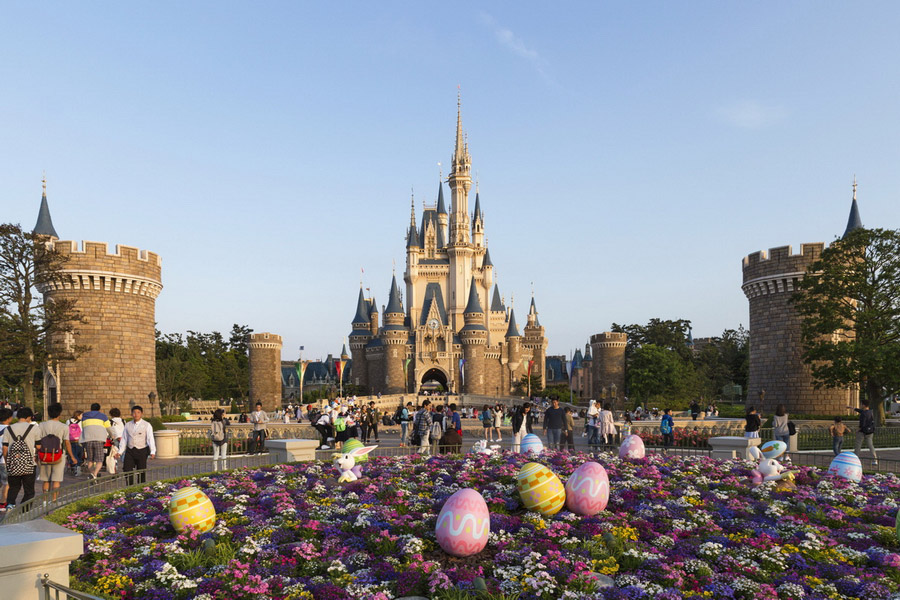
Opened in 1983, Tokyo Disneyland was the first Disneyland outside the U.S., which has grown into a massive Disney Resort with many attractions, hotels, and a monorail. The resort has a second park, known as the Tokyo DisneySea, home to themed parks not found in other Disneyland parks. From exotic lands to the Wild West to futuristic attractions, the entertainment complex thrives with thrilling rides, attractions, live performances, and unmatched events. You can't possibly see everything in one day.
Futuristic High-Tech Things to Do in Tokyo
While many countries live in 2025, Japan sometimes may seem to be a century ahead. Here are a few technological breakthroughs in Tokyo that prove this:
- See robots displayed by various robotic companies, including humanoids assistants at the IREX 2025 International Robot Exhibition in November.
- Interact with robots that communicate with guests and even provide therapy at the Miraikan, the National Museum of Emerging Science and Innovation. In addition to permanent exhibitions, there are temporary special exhibitions such as The Notre Dame de Paris, The Augmented Exhibition from November 2024 to 24 February 2025.
- Explore Pasona 02, hidden in a former bank vault in Tokyo that merges agriculture with office life, growing 100 crops under controlled conditions. It aims to inspire future farmers while creating a unique workspace among thriving plants.
- Stay in a high-tech hotel. There are dozens of capsule hotels in Tokyo, including the first robot-staffed hotel – Henn na Hotel.
- Visit the Tsukuba Space Centre. At this centre, just an hour from Akihabara, guests are welcome to browse interactive installations and research facilities that demonstrate Japan’s bold strides in space exploration.
- Dive into the traditional Japanese arts at the Art Aquarium Museum in Ginza, located on the 8th floor of the historic Mitsukoshi Department store.
- The new Ginza Sony Park, inaugurated on January 26, 2025, is a modern space that hosts a variety of temporary events, exhibitions, and pop-up stores. It is located at 5-3-1 Ginza, Chuo-ku, Tokyo 104-0061.
Parks
Japanese have celebrated cherry blossoms for centuries, with Sakura (the cherry tree in Japanese) season from mid or late March to early April, transforming Tokyo into the most colourful time of the year. The optimal way to appreciate the sight of this short-lived event is through hanami (viewing the flowers) in parks – picnicking under the cherry trees while delighting in food and socialising.
Top Hanami Spots in Tokyo
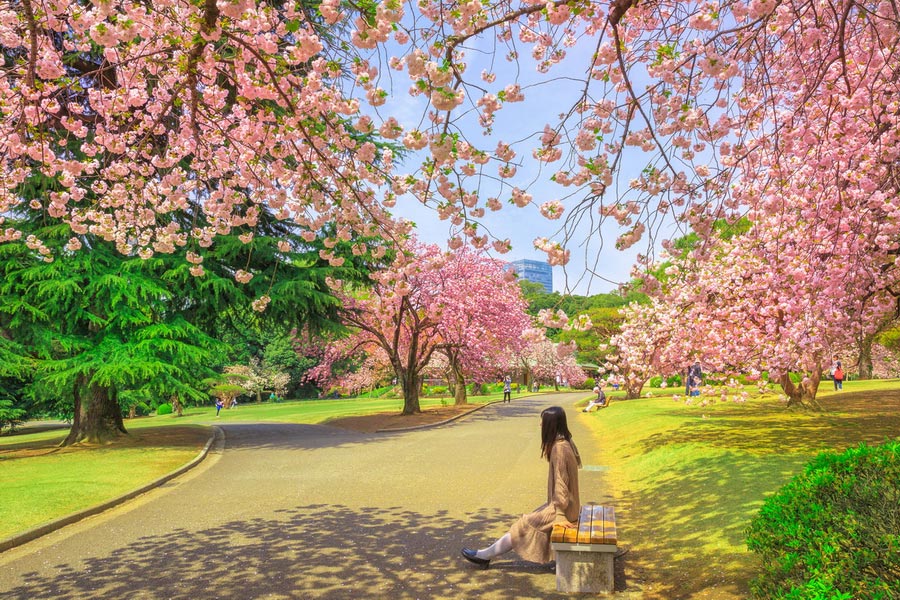
- Ueno Park (上野恩賜公園, Ueno Koen) in Taito ward, Shinjuku Gyoen National Garden (新宿御苑), Sumida Park (隅田公園, Sumida Koen), Chidorigafuchi Park (千鳥ヶ淵公園), Inokashira Park (井の頭恩賜公園), and the Institute for Nature Study (附属自然教育園).
We recommend checking out the Japanese forecast websites announcing the exact cherry blossom dates for the 47 prefectures.
Shopping
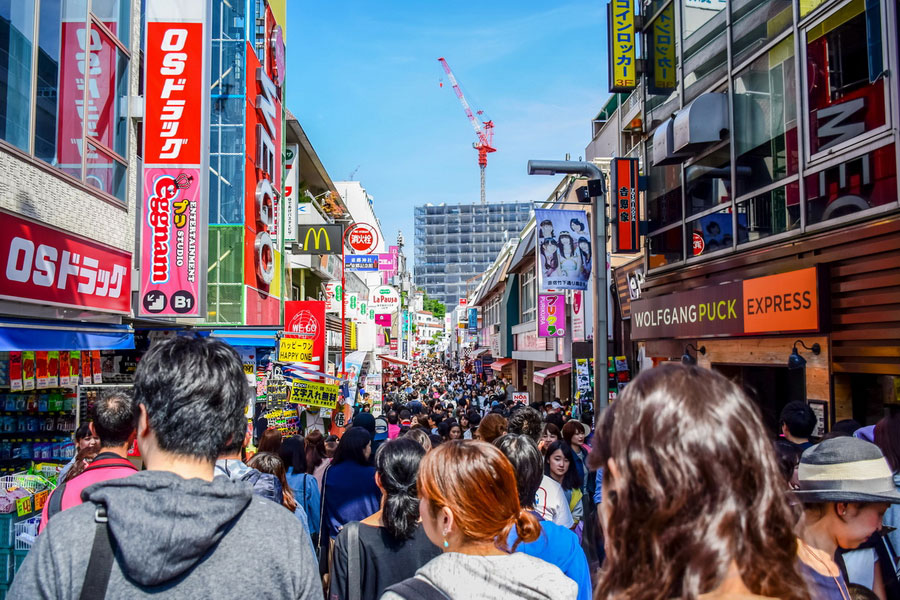
Shopping neighbourhoods, such as Shinjuku, Shibuya, Harajuku, Odaiba, and Ginza, are the most sought-after destinations in Tokyo. These and many other shopping districts have virtually anything one could ever want to buy.
For example, Shinjuku, the largest shopping and entertainment centre, has many exclusive stores, boutiques, electronic chains, and even underground shopping passageways. The same would be true for Shibuya. Harajuku, Ginza, Marunouchi, and Roppongi are upmarket areas.
- Clothing and Fashionable Department Stores in Ginza: The UNIQLO Flagship Store, Ginza Six, Ginza Itoya, and Ginza Wako
- Perfume stores in Shinjuku: Kaori Bar Finca and Nose Shop
- Beauty stores in Shibuya: @cosmeTokyo and Matsumoto KiYoshi
- Upscale watches in Ginza and Shibuya: The Hours Glass Ginza and Watchnian Shibuya, Grand Seiko Boutique
- High-end leather shops in Shibuya: GANZO, PORTER Omotesando, Honten, and Herz
- Jewellery and precious gems in Chuo City: Diamond Jewellery Suehiro Tokyo and enwsp Tokyo Ginza (Pearl Jewellery Store)
- The largest electronic high-tech stores in Akihabara: Bic Camera and Yodobashi
- Shops with traditional Japanese souvenirs: Chikusen (for kimono), Japanese Pottery in Tokyo, Yonoya Kushiho (for handmade combs), Haibara (for Japanese stationery), Ozu Washi (for washi paper), Seisuke Knife, Hyozaemon Chopsticks Speciality Shop, Imadeya Ginza (for sake).
Visitors looking for vintage accessories and clothing will find many options in Omotesando, Front 11201 in the Yoyogi-Uehara district, and Keshiki stores on Meiji-dori Avenue. Shimokitazawa is considered a bohemian neighbourhood for rare and vintage items.
On top of what we've mentioned above, you should check out the Japanese designer shops if you want to return home with the Japanese brand's signature pieces. The boutiques of Kenzo Takada, the first Japanese designer to make his name on the Paris stage, can be found in Shinjuku and Ginza. Kansai Yamamoto dressed Bowie, Elton John, Steve Wonder, and Lady Gaga. His boutiques, known under the name "Yohji Yamamoto," are found in the Aoyama Store, Shibuya, and Shinjuku.
Food in Tokyo
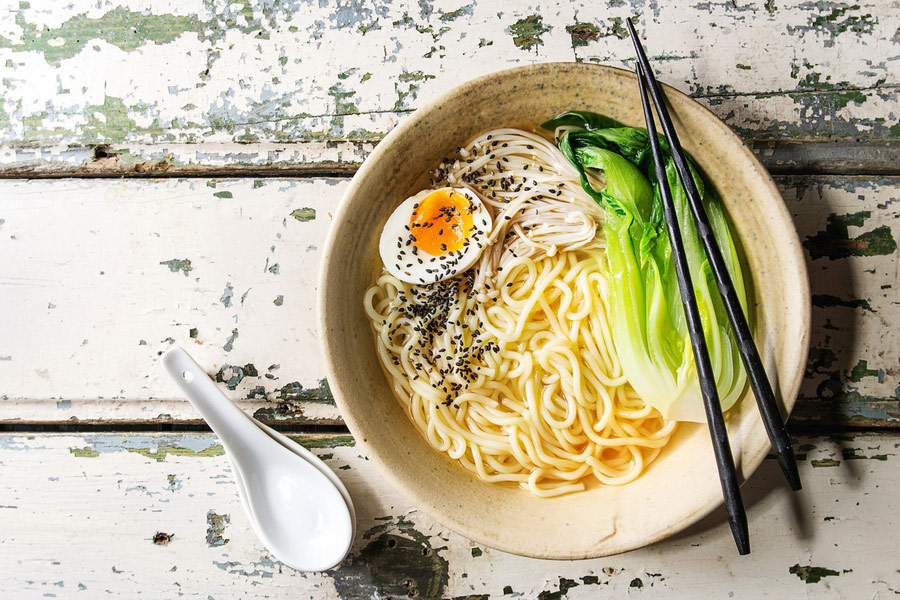
Tokyo, a gourmet capital, has more Michelin Guide-starred restaurants than Paris and New York combined. And, not only that, you get just about anything you want, from sophisticated versions, like kaiseki (懐石), street food, and vegetarian dishes.
UNESCO recognised washoku (和食), the traditional Japanese cuisine, as an Intangible Cultural Heritage due to the high quality and authentic flavour of its dishes.
Fish Markets
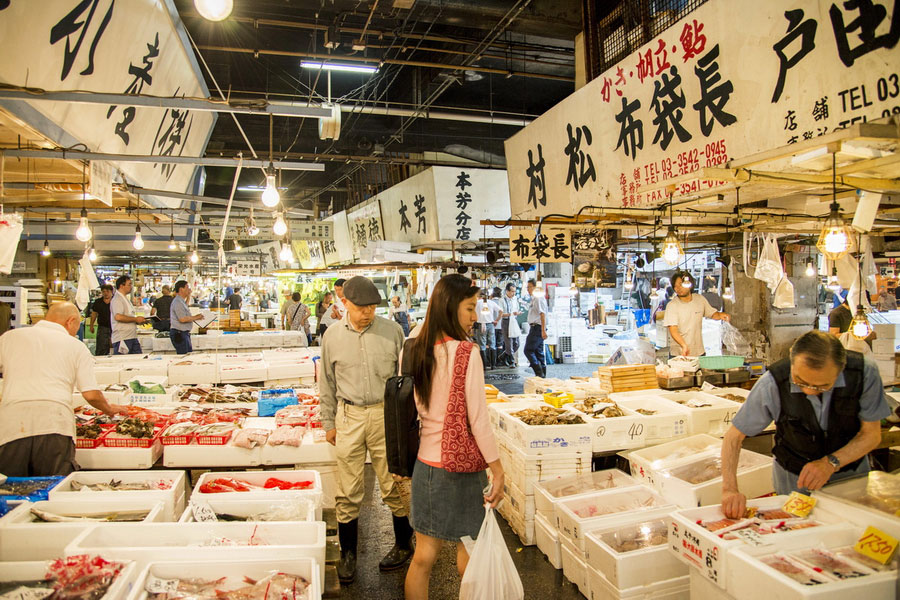
For the freshest food, Tsukiji (築地市場) and Toyosu (豊洲市場)are must-visit fish markets. Tsukiji, operating since 1935, and Toyosu, its modern counterpart, where many top chefs source premium ingredients.
Gourmets can learn how to fillet fish properly, buy various goods, and try bowls of sashimi or sushi. Also, they can sample the legendary Japanese green tea – matcha – or have a cup of coffee at one of the tea rooms at the market.
Kaiseki-ryōri (懐石料理) Dinner
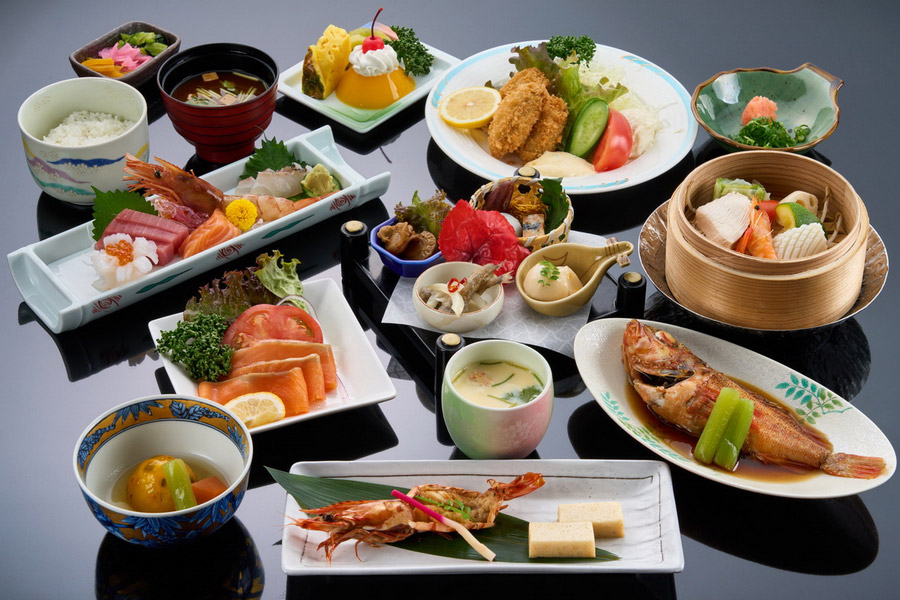
Kaiseki top restaurants in Tokyo: Ryugin, Nishiazabu Kikuchi, Taichi, Ginza Kojyu, Kagurazaka Ishikawa.
In Tokyo, most restaurants have on their menus the traditional kaiseki meal, originally served to the royal family, demonstrating omotenashi (おもてなし, 御持て成し) – Japanese hospitality – through a multi-course dinner served with sake. It typically includes a slow-cooked dish, sashimi, flame-grilled food, and rice, and culminates in a matcha tea ceremony. Alternatively, visitors can learn to make sushi led by a chef in a hidden gem of a restaurant.
Depachika, Tokyo Ramen Street, and Izakaya Alleys
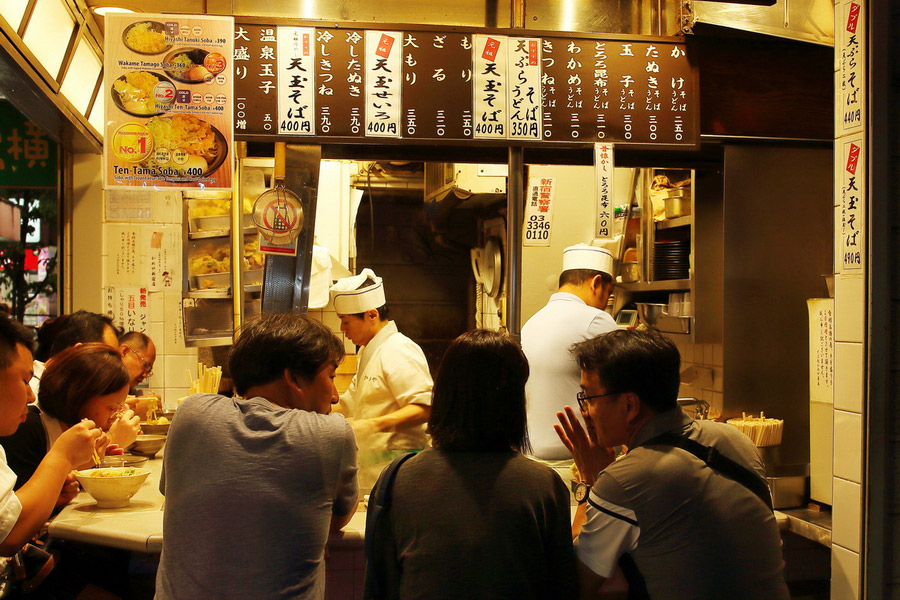
As a unique exploration, guests should visit depachika – basement-level food halls selling sushi, pastries, and gift goods. Shinjuku Takashiyama Department Store’s hall teems with Japanese and global delicacies. In the evening, excursionists can pause at atmospheric izakaya alleys, like Omoide Yokocho, dotted with many great bars.
Vegetarian Dishes
Best vegetarian restaurants in Tokyo: Itosho, Yakuo-in, Sanko-in, Komaki Syokudo Kamakura Fushikian, Bon.
Vegetarian and vegan food can be found in eateries serving Buddhist cuisine, known as shojin ryori (精進料理).
Various dishes have simple ingredients, like pickles, rice, and miso soup. The shojin ryori dinner might include traditional Japanese salad shira-ae made from mashed tofu, vegetables, and sesame seeds.
Coffee Houses, Bakeries, and Patisseries
Few people see Japan as a hub for mouthwatering pastries, yet Tokyo proves this assumption decidedly wrong. The city abounds in superb bakeries and cafes, many managed by chefs who honed their craft in France under world-class pâtissiers. Indeed, in January 2025, the Japanese team clinched another gold medal at the Sirha Lyon Pastry World Cup in France.
The signature item at Truffle Bakery is the White Truffle Salted Bread. While approaching Le Ressort, you will be lured by the aroma of croissants, baguettes, croquettes, and ciabattas. Visit Beaver Bread Brothers for delicious bread – there are so many varieties. Other patisseries to consider for refined miniature pastries or chocolates are Kanadaya, Da Café Ebisu and cowork, Godiva, Ties, and Ease.
Ryokans and Onsen in Tokyo
For a traditional feel of Japan, travellers should opt for a ryokan – traditional inn – instead of a typical Western-style hotel. The best ryokans are found in the countryside. Yet Tokyo features several noteworthy options, including Onsen Ryokan Yuen Bettei Daita, Ryokan Asakusa Shigetsu, and Edo Sakura. Also, be sure to engage in spa activities in an onsen (hot spring bath). In Tokyo, Toshimaen Niwa-No-Yu, Tokyo Somei Onsen Sakura, and Fuku-No-Yu are serene escapes for rest and relaxation.
MICE Events in Tokyo
Each year, Tokyo hosts a myriad of international trade fairs and conferences, drawing business leaders from a broad spectrum of industries around the globe, as well as visitors. Tokyo, Japan’s capital is endowed with world-class infrastructure that impeccably supports such grand-scale events.
For instance, according to the Japan Automobile Manufacturers Association (JAMA), the Japan Mobility Show 2023 alone attracted over 1.1 million participants. The Tokyo Motor Show is held every year, while the International Robot Exhibition (IREX), taking place in 2025, is held every 2 years. And one of the most compelling advantages of attending networking events in Tokyo is the pairing of business and leisure.
City Transport in Tokyo
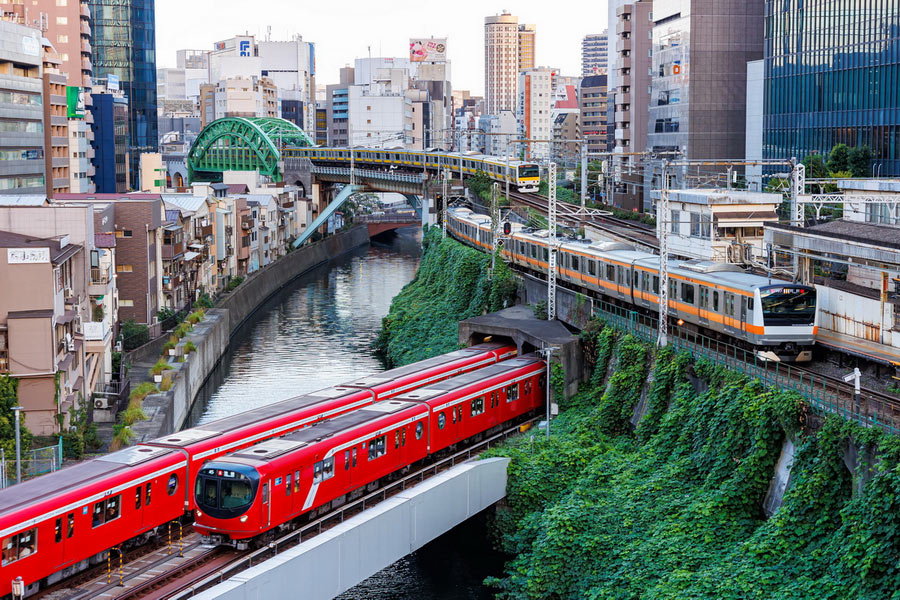
Here’s a quick handy guide to navigating transportation in Tokyo.
JR Rail Pass (JR East)
The JR Rail Pass covers any JR Line, including the Narita Express and most bullet trains (shinkansen rail network), except for the Nozomi and Mizuho. This pass suits travellers who plan to visit Tokyo and beyond. JR Tokyo Wide Pass is a good option for trips to Nikko and regions adjacent to Tokyo.
Navigating in Tokyo
Suica or PASMO IC cards should be first on your list for longer stays. You can ride almost all Tokyo lines with these rechargeable smart cards.
For seamless travel in Tokyo, two websites stand out: HyperDia and Jorudan to receive a comprehensive list of suggested routes. Plus, these routes are grouped based on their speed, cost, and ease of use.
Buses and Taxis
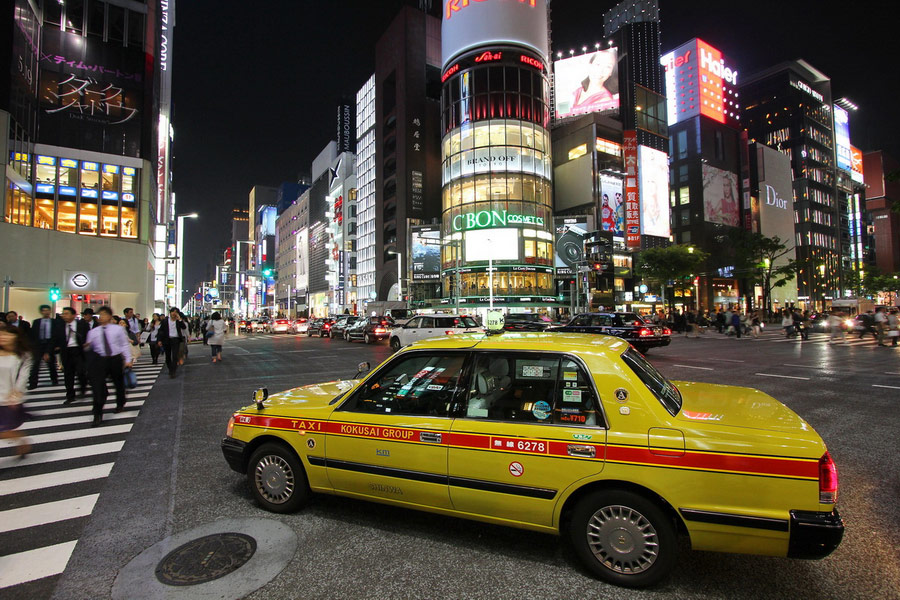
Toei buses provide a convenient ride with Wi-Fi access from the city centre to the 23 wards of Tokyo. Finding a taxi in Tokyo is easy since these can be found at major attractions, airports, and railway stations.
Helicopter Transfers and Tours
Adventurous visitors can treat themselves to exclusive helicopter rides and sightseeing, taking them over famous Tokyo Skytree, Tokyo Tower, Rainbow Bridge, and Mt. Fuji. Night rides are especially wonderful, as the city gets covered in dazzling neon lights.
Water Buses
Water buses in Tokyo are comfortable and scenic means of transportation to travel between the artificial islands of Tokyo Bay. Many of these vessels cruise along the Sumida River. Excursionists can likewise conveniently reach historic districts like Asakusa and Ryogoku.
Car Rental
Major car rental companies in Tokyo are Toyota, Orix, Times, and Nippon. The Toyota website contains useful information about safety and requirements for driving in Japan. Companies such as GMG Rent and Mercedes-Benz Rent provide VIP car services, including rentals of supercars.
How to Get to Tokyo
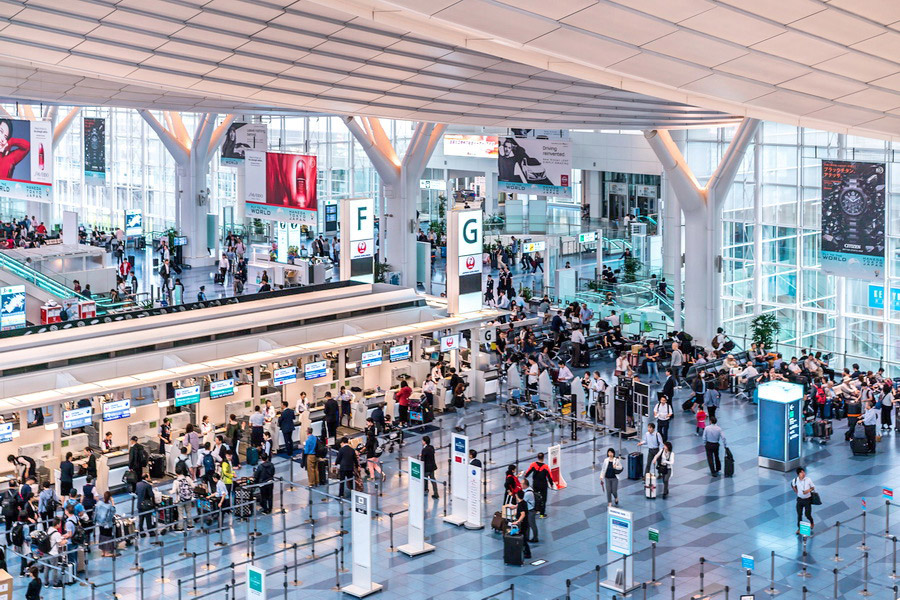
There are two main airports in Tokyo: Narita International Airport (NRT) and Haneda International Airport (HND). Both cater to several transportation modes to get into the city.
Narita International Airport
The Narita Express (NEX) bullet train arrives in Shinjuku Station in central Tokyo in 1h 25m (4,000 yen), while the Keisei Skyliner limited express train reaches Ueno in 1h 10m (2,520-2,570 yen). Airport Limousine buses (3,100 yen) depart every 15 – 30 minutes. Taxes cost around 30,000 yen, with a 60-90-minute ride to central Tokyo.
Haneda Airport
The Keikyu Line connects Haneda Airport to Shinagawa Station in 25 minutes (from 505 yen), while the Tokyo Monorail driverless train reaches Hamamatsucho in 22 minutes (from 490 yen).
Airport Limousine Buses run every 15 – 30 minutes, taxis cost 8,000-12,000 yen, and private jets offer ultimate flexibility for travelling beyond Tokyo.
Spoken Languages in Tokyo
It is important to note that the only official language in Japan is Japanese, and it is the most spoken language in Tokyo and other regions. While younger generations may have some command of English, it is not guaranteed.
You can solve the language barrier by leveraging translation apps for iOS or Android, such as Google Translate, Microsoft Translator, and others. Or, you can learn some essential phrases and basic Japanese to navigate your way around Tokyo.
Currency

Japan’s official currency is the yen (¥). Major shopping malls and retail stores readily accept foreign credit cards. However, small shops prefer cash. 7-Eleven ATMs support most international cards, including Diners Club. Airports are equipped with ATMs, and currency exchange services are available at banks, exchange offices, and select hotels.
Did you know?
Next time you hold Japanese coins, you will notice that the 5- and 50-yen coins have a hole in the middle. One might assume this design dates back to ancient times when coins were threaded on a rope for convenience, especially since pockets were rare. That’s right – Japan has adopted the tradition of China, where coins had square holes, and other Asian nations followed suit. Yet the modern design is not a mere nod to history. At one point, the Japanese government introduced the holes on modern coins as a cost-saving measure to reduce the amount of material used.
Is Tokyo Safe?
Japan is widely regarded as a safe country with low crime rates. Nevertheless, it is always prudent to remain vigilant and prepared for unexpected situations as you would usually do when travelling far away from home. It is advisable to note your country's embassy address and contact details before arriving in Japan in case of need.
While petty crime is rare, it can occur. In such instances, it is advisable to visit the nearest Koban (交番), small police stations commonly scattered throughout neighbourhoods. If you cannot locate one, local residents are usually happy to assist.
The Tokyo Metropolitan Police Department’s official website provides valuable resources on staying safe in Japan.
When going to a restaurant or a bar, it is recommended to check the menu and prices before ordering to avoid being overcharged. Choose your restaurants and bars in advance by selecting only the ones with good ratings and comments on social media or on the Internet.
There are train and metro carriages available for ladies only at peak hours for more comfortable travels.


